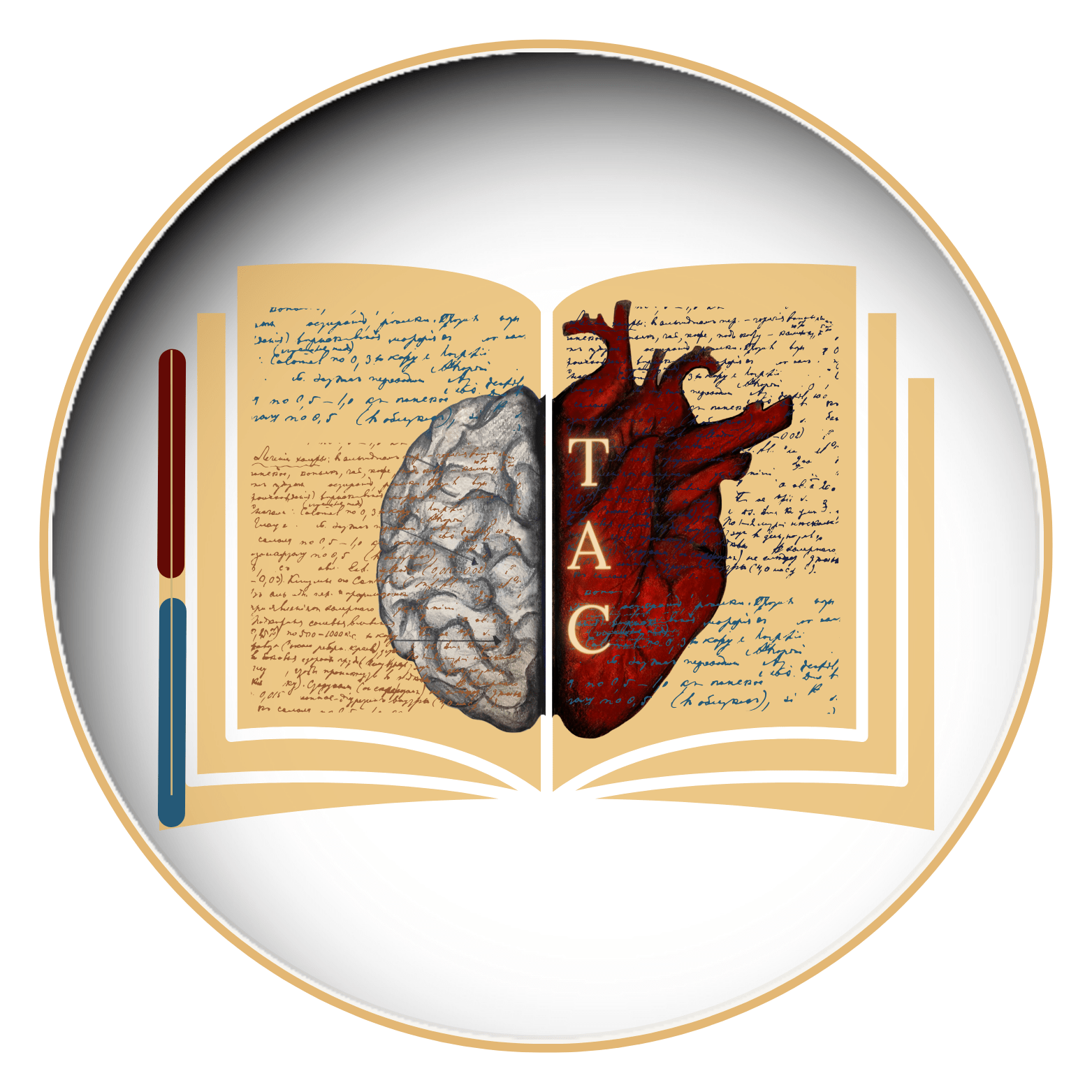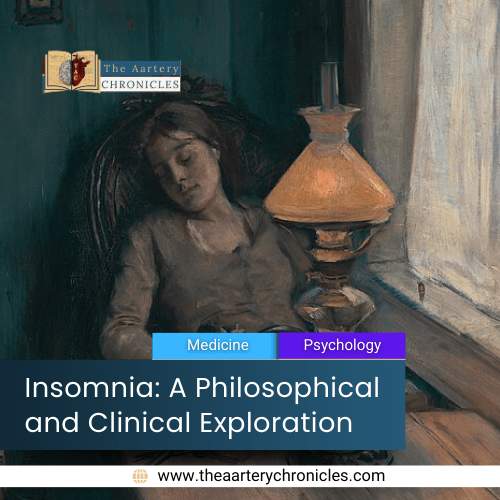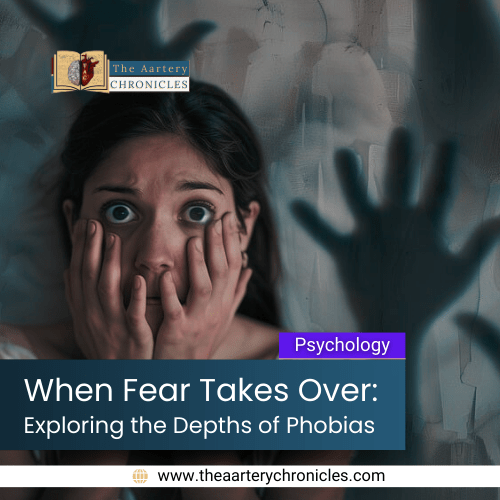
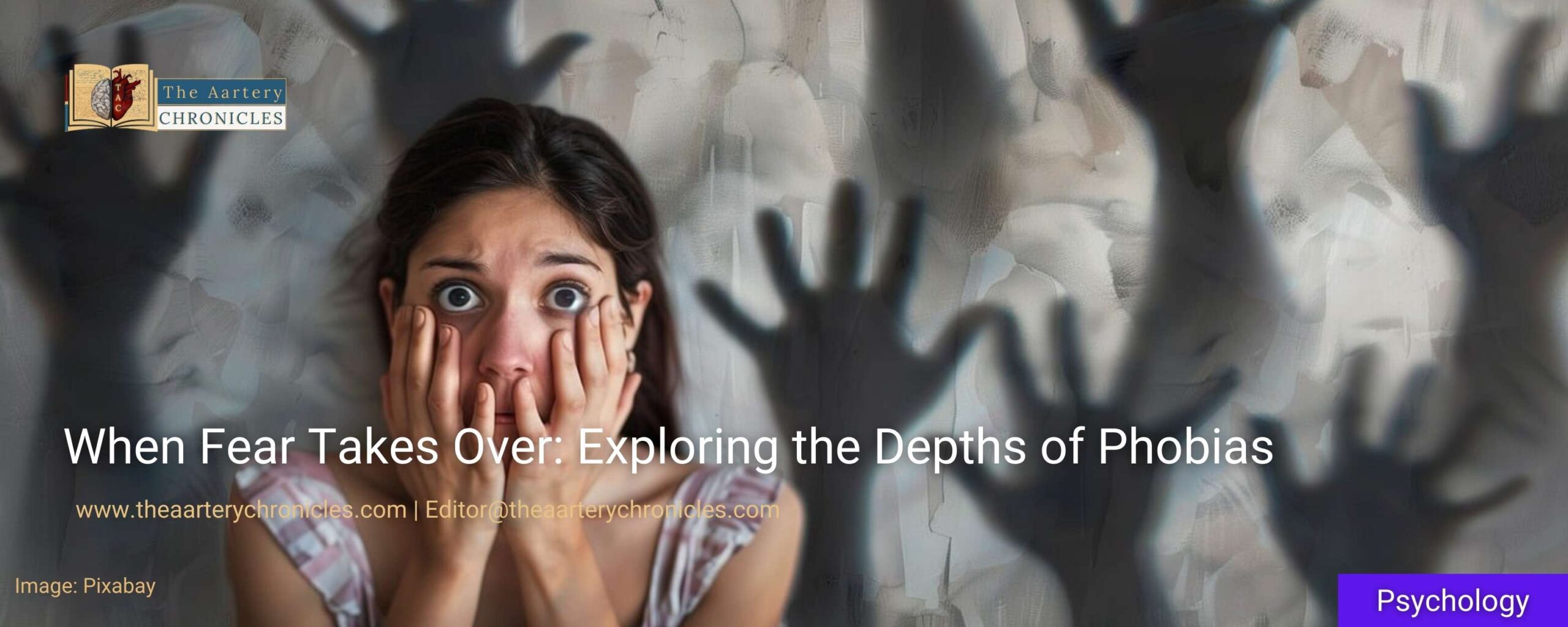
When Fear Takes Over: Exploring the Depths of Phobias
Introduction
How many of you remember the series “Monk” starring Detective Adrian Monk? Remember how each time he reaches for a wet wipe after shaking hands with a person or how he always uses wipes to touch normal everyday objects like a door knob, telephone etc. And avoids touching them with his bare hands. He has, what we call, certain Phobias or fears.
A Phobia is defined as persistent excessive and irrational fear of something like an object, person, animal, activity, or situation, leading to extreme panic and anxiety. In other words, it can be termed as a type of anxiety disorder.
Causes: Why do we have phobias
It has been observed that phobias are the outcome of our fears pertaining to any incident or experiences that we have faced in our childhood or adulthood. Suppose you were trapped in a lift, you may develop a fear of enclosed spaces i.e. Claustrophobia. Suppose you nearly drowned during swimming, you may develop Aquaphobia, the fear of water. It is interesting to note that some phobias can be ‘learnt’ as well. Suppose a father has a certain phobia, it is evident that the child may, in most likelihood, develop the same phobia. Strange, but true.
When you are trapped in a lift, you will feel scared, breathless, anxious and want to be set free at the earliest. You will scream to be freed from there and may even begin beating on the lift doors. You will feel helpless and this may lead to increased pulse rate, palpitations, profuse sweat, nausea, parched throat, to name a few. The relief you feel you feel when the lift resumes its journey and you are out of it, will make you thank your stars that you escaped. In many cases, the next time you see a lift your brain will retrieve that anxious memory and your body may react the exact same way and you will immediately take the stairs instead of the lift. On the other hand, you can attempt to take the lift, after all, it cannot get stuck every time!
As per research, phobias are linked to the “amygdala, a part of the brain that processes our emotions, situated in the medial temporal lobe, just anterior to (in front of) the hippocampus. This causes the release of the “fight-or-flight” hormones, which agitate the mind and body.
Classification of phobias
There are three main classifications of Phobias that people face.
Specific Phobia: This refers to fears relating to objects, animals, situations, or activities. This specific fear comes to light only when it interferes with daily routine activities of school, work, or home life. This fear is more prevalent among women. In the event, this specific fear is best avoided, then professional treatment may not be required for the same. In some cases, certain personal and professional decisions may lead to avoiding such situations, thereby reducing the chances of phobias.
Examples:
(i) Aerophobia – Fear of flying thinking that the plane may crash
(ii) Cynophobia: Fear of dogs thinking that the dog will attack and bite
(iii) Claustrophobia: Fear of enclosed spaces: thinking that you will be trapped in that space forever
(iv) Gephyrophobia: Fear of bridges thinking that it may collapse when you are moving on it
(v) Acrophobia: Fear of Heights: thinking that you will fall from there
Social Phobia: This refers to the anxiety or discomfort faced by a person when subjected to embarrassment, humiliation or scorn by others in social or performance related situations like:
(i) public speaking
(ii) meeting people
(iii) dealing with authoritarian figures
(iv) eating in public
(v) using public restrooms.
You may manage to confront this fear, but you will still feel anxious before, uncomfortable for the duration and continue to retain unpleasant feelings after the event. This phobia manifests when it has a significant bearing on your daily life by disrupting it and affecting your social and career-based relationships. It may be coupled with depression or alcoholism and has its presence felt in early adolescence or before.
Agoraphobia: This refers to the fear of having a panic attack in a place or situation from which escape may be difficult or embarrassing. Sufferers tend to avoid the location or the root cause of their fear like:
(i) being alone outside their home
(ii) being home alone (No, not the film ! 😊
(iii) being in a crowd
(iv) travelling in a vehicle
(v) riding in an elevator or over a bridge
Such persons avoid crowded streets, crowded stores, theatre and any other crowded places.
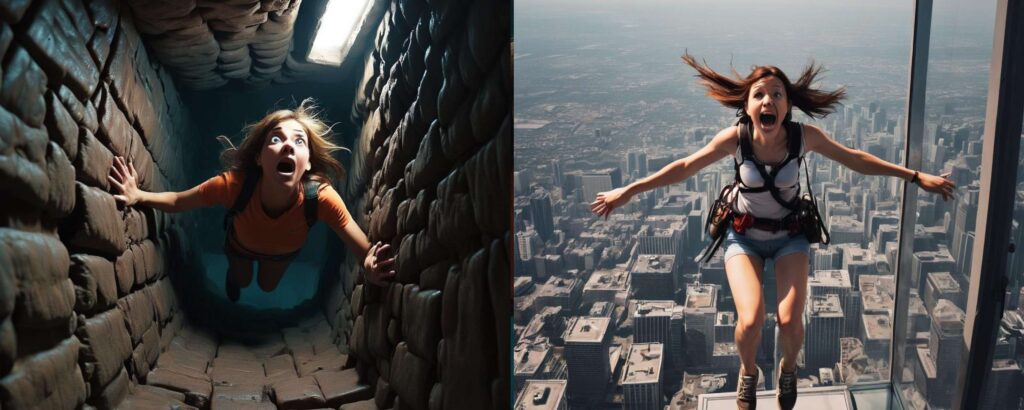
The situation related panic attacks occur suddenly and at random whereby the sufferer is unable to distinguish the trigger that brought it on. This makes him anticipate the eventuality of another future panic attack, leading him to fear the future and hence he avoids places or situations where previous episodes occurred. Such persons seldom leave their home and if they do, it is with a family member or trustworthy person. Such persons may also be prone to depression, fatigue, tension, alcohol or substance abuse addiction, obsessive disorders thereby making it imperative to seek professional medical aid and cure.
Symptoms of phobias
There are some characteristic symptoms of Phobias:
- Feeling faint, lightheaded, dizzy, unsteady
- Feeling as if you are choking
- Pounding heart, palpitations or accelerated heart rate
- Chest pain or tightness in the chest
- Profuse sweating
- Hot or cold flushes
- Shortness of breath or smothering sensation
- Nausea, vomiting or diarrhea
- Pallor
- Screaming
- Crying
- Narrowed vision
- Feeling of fear or panic
- Feeling of escape
- Feeling of danger
- Feeling of disconnection from your own body (depersonalization) or the world around you (derealization)
Long-term effects
There are some long-term effects of phobias on our physical and psychological wellbeing. Those with specific or agoraphobia often have the likelihood to develop certain maladies like :
- Anxiety disorders
- Bipolar disorder
- Depressive disorders
- Personality disorders
- Substance use disorders
- Somatic symptom disorders
- Heart disease
- Chronic obstructive pulmonary disease (COPD)
- Balance and dizziness leading to falls and fall-related injuries
- Degenerative brain disorder and dementia symptoms
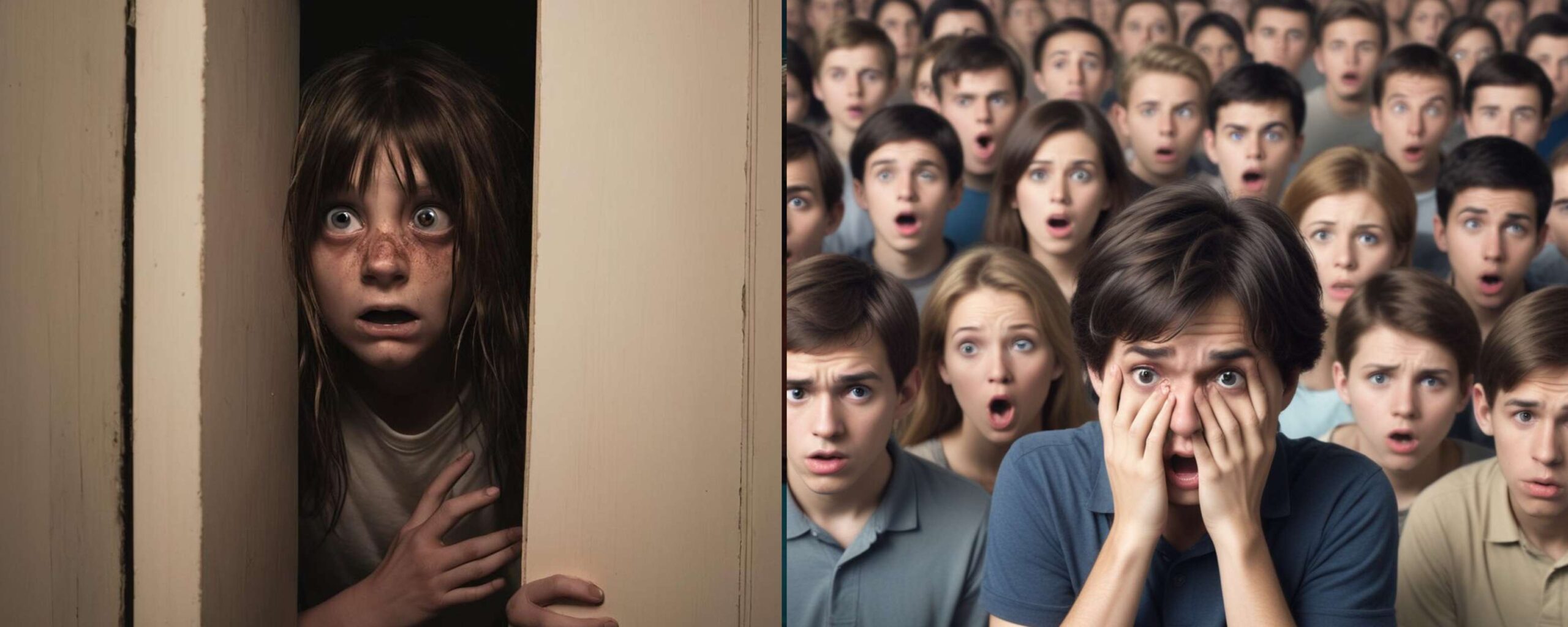
Treatment and cure
Phobias can be treated with mental health therapy (Psychotherapy) or cognitive behavioral therapy. About 75% of persons with specific phobias overcome their fears through cognitive behavioral therapy and 80% of those with social phobia get relief with medication, cognitive behavioral therapy or a combination of both.
1) COGNITIVE BEHAVIORAL THERAPY : Also known as CBT: is the commonest therapeutic treatment for phobias. In this, the sufferer is exposed to the source of the fear but in a controlled setting. This helps to recondition and reduce anxiety. This therapy deals primarily on identifying and changing the negative thoughts, dysfunctional beliefs and negative reactions to the phobic event. The use of virtual reality technology is a new CBT technique, which exposes the patients to their phobias safely.
2) EXPOSURE THERAPY: This can be done in the following ways :
(i) Systematic desensitization which involves gradual exposure to the triggers over a period of time, whereby you can move on from the fears that trouble you the least to those which trouble you the most. This is a way of practicing adjusting our thoughts and behavior to effectively manage fear and anxiety that we feel.
(a) In vivo – we are exposed to the fear in “real life” so we can work through it.
(b) Imaginal – we imagine our fear and we process, work through it by thinking about it. This is an effective way to manage dangerous fears that are harmful in “real life”.
(ii) Flooding which is similar to desensitization only difference being that you are exposed to the trigger as a whole and not in parts. This aids in adjusting the triggers and controls anxiety. But this should be done with utmost care and precaution as this is not a very common option to control phobias.
3) MEDICATION: The use of antidepressants and anti-anxiety medications alleviate the physical and psychological reactions to the phobia. Proper options and recommendations should be taken from your medical practitioner and the possible side effects and/or complications should also be noted carefully.
Most of us may have some phobia or the other. The trick is to identify the trigger and try to overcome the phobia. Strong will power, positivity, mindfulness, Yoga, breathing exercises, physical exercise, healthy diet, adequate water intake, sound sleep, less stress, happiness, are some of the pointers that may help to overcome your fears. A healthy body and a healthy mind will do wonders, hand in hand.
It is human nature to be scared but we should not let this fear get the better of us. After all, fear is in the mind. If we can control our mind, then we can conquer our fear.
Last but not the least, some of the weird phobias:
- Chrematophobia: Fear of Money
- Cyberphobia: Fear of Computers
- Ablutophobia: Fear of bathing or cleaning self
- Nomophobia: Fear of being without a mobile phone
- Hippopotomonstrosesquipedaliophobia: aka sesquipedaliophobia: Fear of long words
